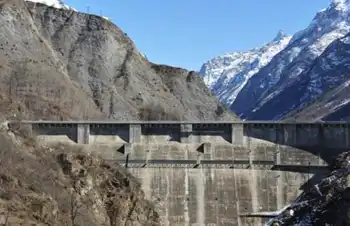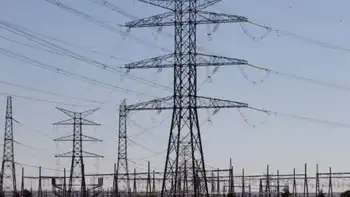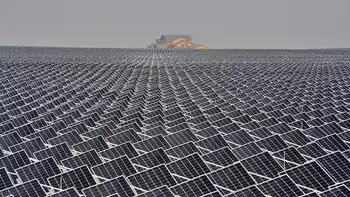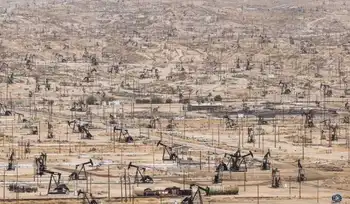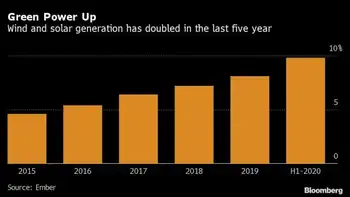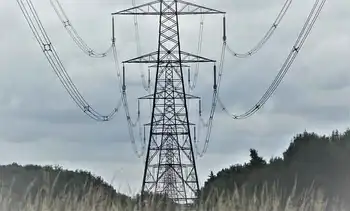Offshore wind could be next wave for U.S.
By Reuters
Protective Relay Training - Basic
Our customized live online or in‑person group training can be delivered to your staff at your location.

- Live Online
- 12 hours Instructor-led
- Group Training Available
The United States has experienced a surge in investment in wind power over the past four years, more than tripling its ability to turn wind into electricity. But construction has been entirely on land and largely in America's rural midsection — leaving open the costly challenge of how to transmit power to the densely populated coasts where it is most needed.
That could be changing. Developers have proposed wind farms off Massachusetts, Rhode Island, Delaware and New Jersey to meet the electricity needs of the East Coast.
"They're building these wind farms in the Midwest fast, which is great. The problem is there's no people," said Rhode Island Governor Donald Carcieri. "Where is the energy needed? The energy is needed here on the East Coast."
The Cape Wind project in 2001 became the country's first major proposed offshore wind farm. Its developers aim to construct 130 towers, which will tower 440 feet above the surface of the Nantucket Sound.
To supporters, Cape Wind represents Massachusetts' chance to be a leader in clean energy. It would generate 420 megawatts of power, enough for 336,000 typical American homes.
Opponents, including Democratic Senator Edward Kennedy, who has a home on the Cape, say the towers, 5 miles from shore, would be a risk to navigation and hurt tourism.
Cape Wind's developers need one last major regulatory approval, from the U.S. Department of the Interior. Should they get it, they expect to have the project up and running in two years, which will require finding more than $1 billion.
Jim Gordon, Cape Wind chief executive, said he believes investors will come through.
"There's no doubt that since last summer we have kind of fallen into a significant capital financing crunch," he said. "I'm confident that the Cape Wind project is going to be financed."
The Obama administration sees investment in alternative energy sources like wind and solar, which do not emit carbon dioxide that aggravates global warming, as a cornerstone of its economic and energy policies.
Momentum is on wind's side. Last year developers invested more than $17 billion in new U.S. wind farms, according to the American Wind Energy Association. Wind now represents more than 1 percent of the U.S. electricity supply.
Companies including U.S. conglomerate General Electric Co, Germany's Siemens AG and Denmark's Vestas have seen demand for turbines soar.
But onshore wind must deal with the cost and complexity of building transmission lines from Texas, Minnesota and other leading wind producing states to demand centers.
Texas oil billionaire T. Boone Pickens blamed the difficulty of building transmission lines and bleak credit markets for his decision this month to postpone plans for what would have been the largest U.S. wind farm.
"It really wasn't surprising that it was discovered to be a Herculean task to permit and capitalize this type of transmission infrastructure," said Paul Rich, chief development officer of Deepwater Wind, which is working on $1.5 billion of projects off Rhode Island.
Deepwater, backed by hedge fund DE Shaw and wind developer First Wind, plans its turbines 15 miles offshore, which would make them practically invisible from the coast.
Still, even offshore farms need transmission lines to bring the power ashore, which can anger local communities.
"Coastal real estate is expensive," said Kevin Book, energy analyst at ClearView Energy Partners, of Washington. "It's going to be very tough to get stakeholders on board when you're crossing coastal real estate with something unsightly."
Other developers are planning wind farms in the Gulf of Mexico off Texas and in the inland Great Lakes.
The Cape Wind project has been the subject intense local controversy. Residents said they like the idea of playing a leading role in renewable energy, but some worry the 24 square mile (62 sq km) project will hurt tourism.
"Renewable energy is great, but because it is such a huge footprint, the site becomes critical and Nantucket Sound is absolutely the worst location," said Audra Parker, executive director of the Alliance to Protect Nantucket Sound, a group of local businessespeople and residents who oppose the project.
Some backers the project's critics are wealthy property owners trying to protect their ocean views. Parker said that was not the case.
"People have this sense that it's a very wealthy community. In fact, it's not at all," she said. "There's a lot of two-income families here on the Cape, on the islands, people earning their income through fishing, through other means."
Even some locals whose incomes are tied to the tourist trade argue that they would prefer an offshore wind farm to a conventional fossil fuel-burning power plant.
"I wouldn't necessarily say it's the best place for it but we definitely need to start looking at alternative energy sources," said Peter Baldwin, 22, who works as a waiter in Hyannis. "I don't see how a wind farm is going to change the way we look at the Cape necessarily. I think it's better than looking at a power plant."





